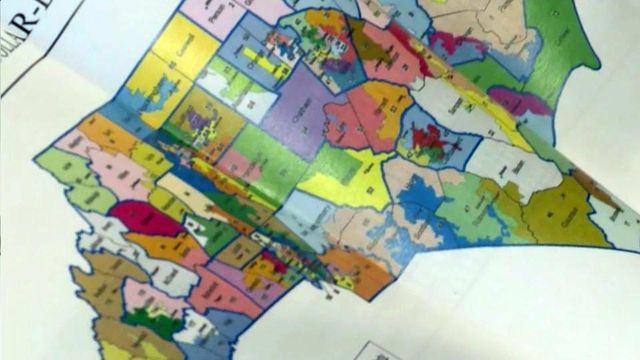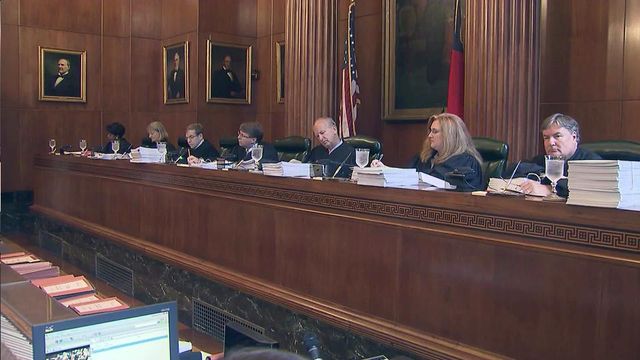Voting maps back before NC Supreme Court
Eight months after the North Carolina Supreme Court ruled in favor of congressional and legislative voting maps drawn by the Republican-led General Assembly in 2011, the maps were back before the court on Monday.
Posted — UpdatedThe U.S. Supreme Court in April ordered the state court to take another look at the maps in light of a decision on an Alabama redistricting case where the justices found lawmakers in that state relied too much on "mechanical" numerical percentages while drawing legislative districts in which blacks comprised a majority of the population.
Those who sued over North Carolina's maps in 2011 believe the ruling in the Alabama matter is spot on with the boundaries drawn by the General Assembly. They argue that it confirms two dozen legislative districts, along with the majority-black 1st and 12th congressional districts, should be struck down and maps redrawn quickly by the legislature for the 2016 elections.
Pointing to the odd shape of Senate District 34, for example, Edwin Speas, an attorney for the plaintiffs, said "race is the only explanation" for how the district was drawn.
"There is no legitimate criteria that explains this appendage, these split precincts, or this appendage," Speas said.
Anita Earls, an attorney for the NAACP and the League of Women Voters, two groups that also sued over the maps, said split precincts discourage voting because people are confused as to the districts in which they can vote and the candidates for whom they can vote.
Critics of the maps say GOP lawmakers crammed as many black voters as possible into a few districts to make other districts easier to win for Republican candidates. Earls noted that black candidates have won in the past in districts that were majority white, so there was no reason to drastically redraw some districts.
Tom Farr, an attorney representing the state, argued that the Alabama decision has no bearing on North Carolina maps because North Carolina lawmakers did what their counterparts in Alabama didn't do by gathering input through public hearings and examining the impact of proposed changes on each district individually.
"Race was not the predominant motive because of all of the other factors that this court has already recognized that went into the drawing of these districts," Farr said.
The NAACP submitted proposed maps to lawmakers after the 2010 census that included majority-black districts, he said, and maps backed by the plaintiffs exhibit the split precincts and other problems to which they're objecting.
"The plaintiffs have offered no standards on what exactly the state has to do to comply" with the Voting Rights Act, Farr said.
"This case is not about dueling maps," Earls responded. "It's about a districting process in which the legislature started out with a racial proportionality goal and imposed a racial quota on the districts it drew."
"When a legislative body uses race to accomplish its political goals, its actions are subject to the 14th Amendment," Speas said. "Politics is no defense to the violation of the 14th Amendment rights of citizens."
A Virginia congressional district also has been reviewed in light of the Alabama case. A panel of federal judges ruled that Virginia's 3rd Congressional District was unlawful.
The prevailing decision by North Carolina's justices is likely to be appealed back to the U.S. Supreme Court. There are also two other pending North Carolina redistricting cases in federal court.
Related Topics
• Credits
Copyright 2024 by WRAL.com and the Associated Press. All rights reserved. This material may not be published, broadcast, rewritten or redistributed.






